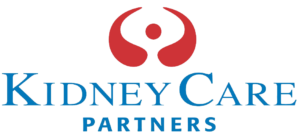December 2, 2005
MINUTES
Kidney Care Quality Initiative Quality of Life/Patient Perspective Work Group
December 2, 2005
Conference Call
Attendees
Bill McClellan
Linda Szczech
Dick Goldman
Lori Hartwell
Bill
Kathy Lester
Karen Thiel
Summary
Bill McClellan, the Work Group facilitator/leader, welcomed participants and briefly reviewed the status of quality of life (QOL) and quality of care (QOC) measures for the ESRD population. The members discussed whether these measures should be part of a pilot program before being included in a pay for performance program.
There was a brief discussion about the importance of relying upon preventable or avoidable hospitalizations as an outcome measure because hospitalizations affect every aspect of patients’ quality of life. The Work Group requested the Clinical Measures and Pay for Performance Work Groups be told of their desire to emphasize preventable hospitalizations.
The members also discussed the adequacy of dialysis and asked whether there is a literature relating the adequacy of dialysis to patients’ QOL. They agreed that dialysis modality (in-center hemodialysis, home hemodialysis, more frequent hemocdialysis, peritoneal dialysis), as well as transplant status should be considered as process measures related to QOL.
The members requested that Patton Boggs prepare summary charts on existing QOL and patients’ QOC instruments used for ESRD patients describing the source, the proprietary nature, the validity and reliability, the calibration, the transportability, the comparability, and range of each potential measurement instrument.
In addition to the measures included in the background materials, Dick Goldman suggested adding QOL measures used by Berman, et. al, and the Karnofsky scale, as well as patients’ QOC measures used by Newmann and Pfettscher. Bill McClellan added that the shorter version of the SF-36 also should be featured in the charts.
The members discussed the need to evaluate ESRD CAHPS® as an instrument in the ESRD care settings because it will be released by the Agency for Health Care Quality (AHRQ) into the public domain this month. Within this instrument, there are two questions, which may be useful as QOL measures (a question about the patient’s perspective on his or her overall health status, and a question about the patient’s perspective on his or her mental/emotional health status).
The members suggested that one of their recommendations might be to ask AHRQ and the Centers for Medicare and Medicaid Services (CMS) to test these two questions as global measures of patients’ QOL.
The members discussed two other issues related to QOL – habilitation and end-of-life care. A patient’s employment status during dialysis is already captured on dialysis facility reports. However, some members commented that CMS appears to be moving toward patient satisfaction with care and functionality as QOL measures. Dick Goldman suggested that the Work Group might want to consider looking at end-of-life-related measures, such as the quality of palliative care and depression scales.
The members concluded by noting that QOL and patients’ QOC measures are important because they reflect the patient’s perspective. As long as the measures have been properly tested, with known validity and reliability, it may not be necessary to conduct clinical trials before recommending adoption of the measures.
The next workgroup conference call is scheduled for December 8, 2005 from 12:00 – 1:30 p.m.
